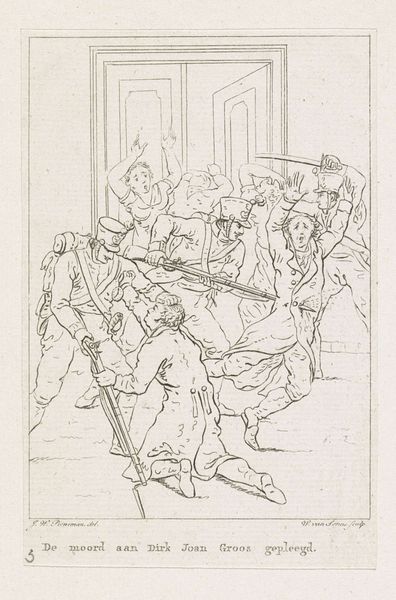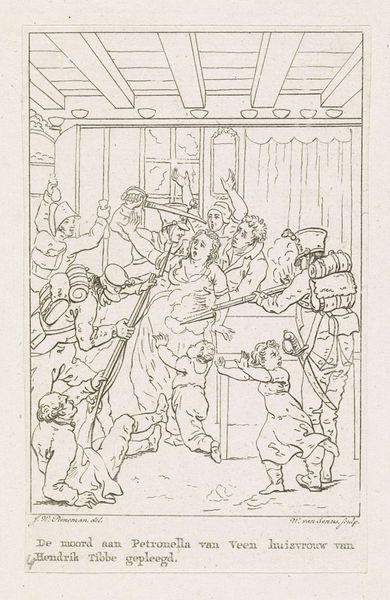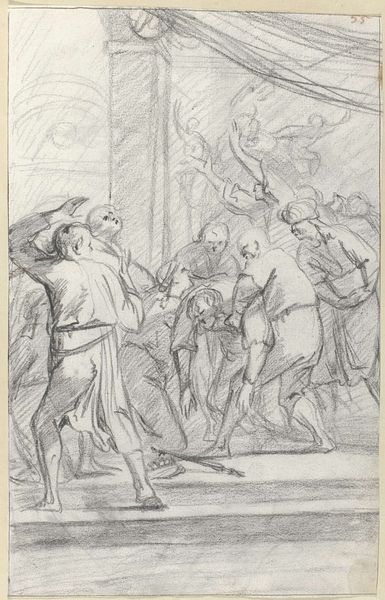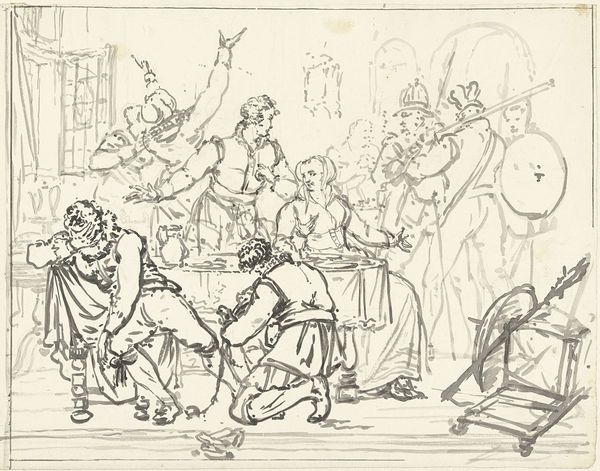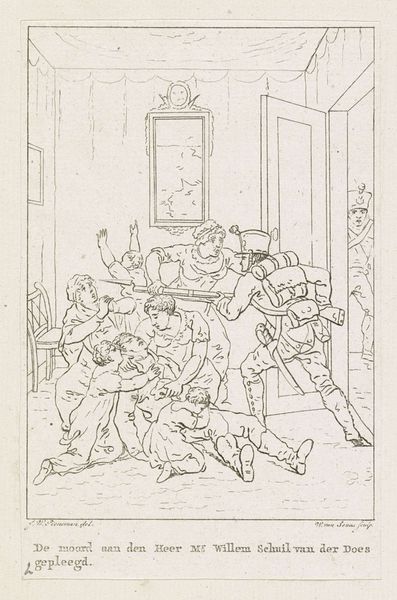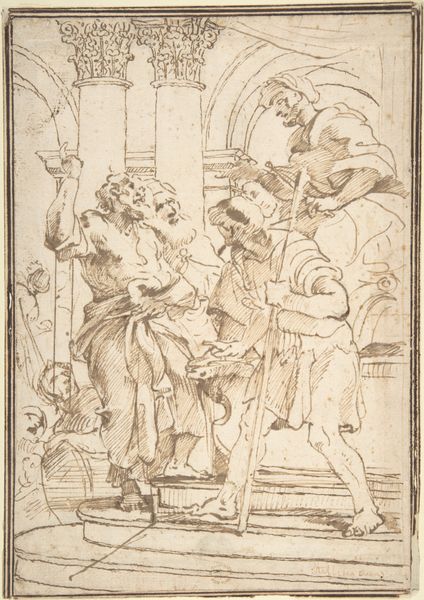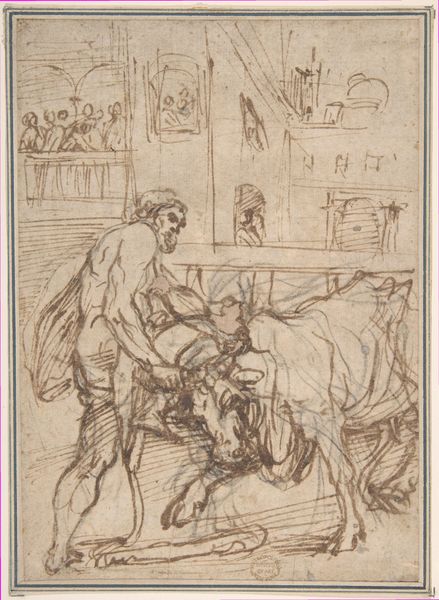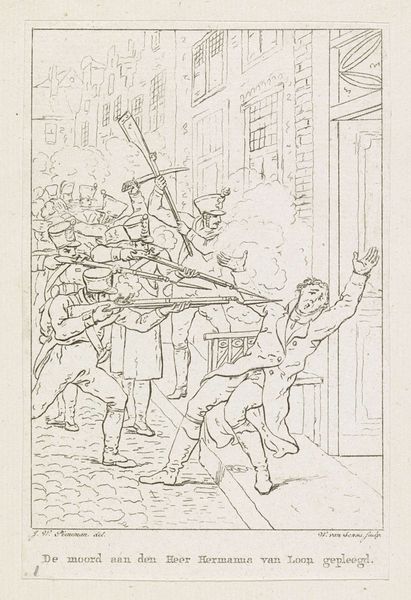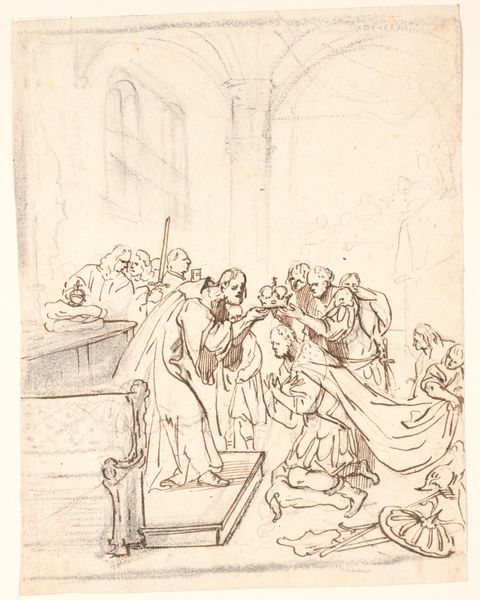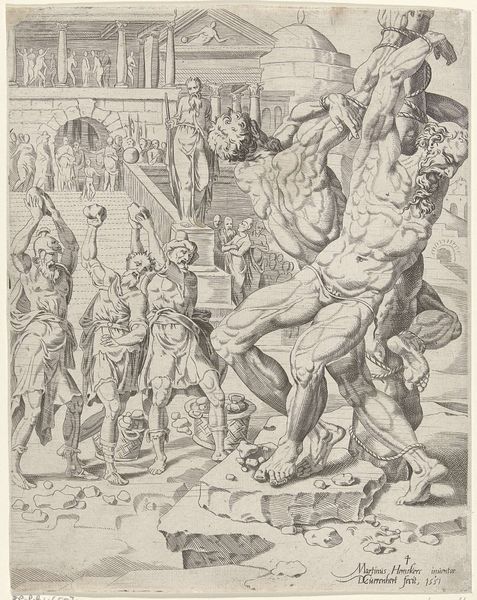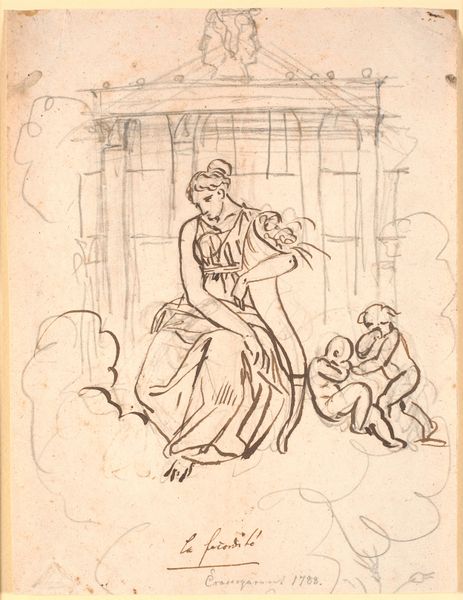
drawing, ink, pen
#
drawing
#
neoclacissism
#
narrative-art
#
ink
#
pen
#
genre-painting
#
history-painting
Dimensions: height 142 mm, width 92 mm
Copyright: Rijks Museum: Open Domain
Curator: This pen and ink drawing, called “Plundering van de katholieke kerk te Woerden, 1813”, created circa 1813-1814, captures quite a vivid scene, doesn’t it? It's currently held at the Rijksmuseum and is attributed to Willem van Senus. Editor: Vivid is definitely one word for it! Chaos comes to mind as well. It's stark, almost unsettling, with those frenetic lines detailing the soldiers' actions and the priest's distress. A moment frozen, heavy with tension, and the bare ink feels fitting for such a grim snapshot of history. Curator: I think the starkness accentuates its documentary feel, reflecting, in many ways, Neoclassical interests in recording events, but maybe in a slightly more dramatic key? What symbols jump out at you in terms of that chaos you mentioned? Editor: Oh, without a doubt, it is chaos. First, the altar itself, with its displaced candlesticks, represents overturned order and disrupted faith. And notice how the central soldier wielding a sword almost seems to slice through any remaining sanctity in the space. He becomes a direct symbol of the sacrilege enacted here. Curator: Right. And it is very direct! What I see reflected is the tension between faith and temporal power—a classic theme played out violently in this moment. But beyond that immediate clash, do you find other resonance in how the artist chooses to portray it? Editor: Definitely! The architectural elements, rendered almost like stage props, highlight how history and ideology were being actively constructed and manipulated in this period. Even those somewhat static figures in the background become complicit witnesses to the unfolding drama, their presence speaking to the complex relationship between individual action and collective historical processes. Curator: True. The architectural detail is striking—the church itself almost becomes another character in this drama, enduring and observing. Well, thanks to Willem van Senus for documenting the tensions that live in these times and are embedded into that architecture still. Editor: Yes, and how the choices made in seemingly simple drawings continue echoing those questions for generations!
Comments
No comments
Be the first to comment and join the conversation on the ultimate creative platform.
